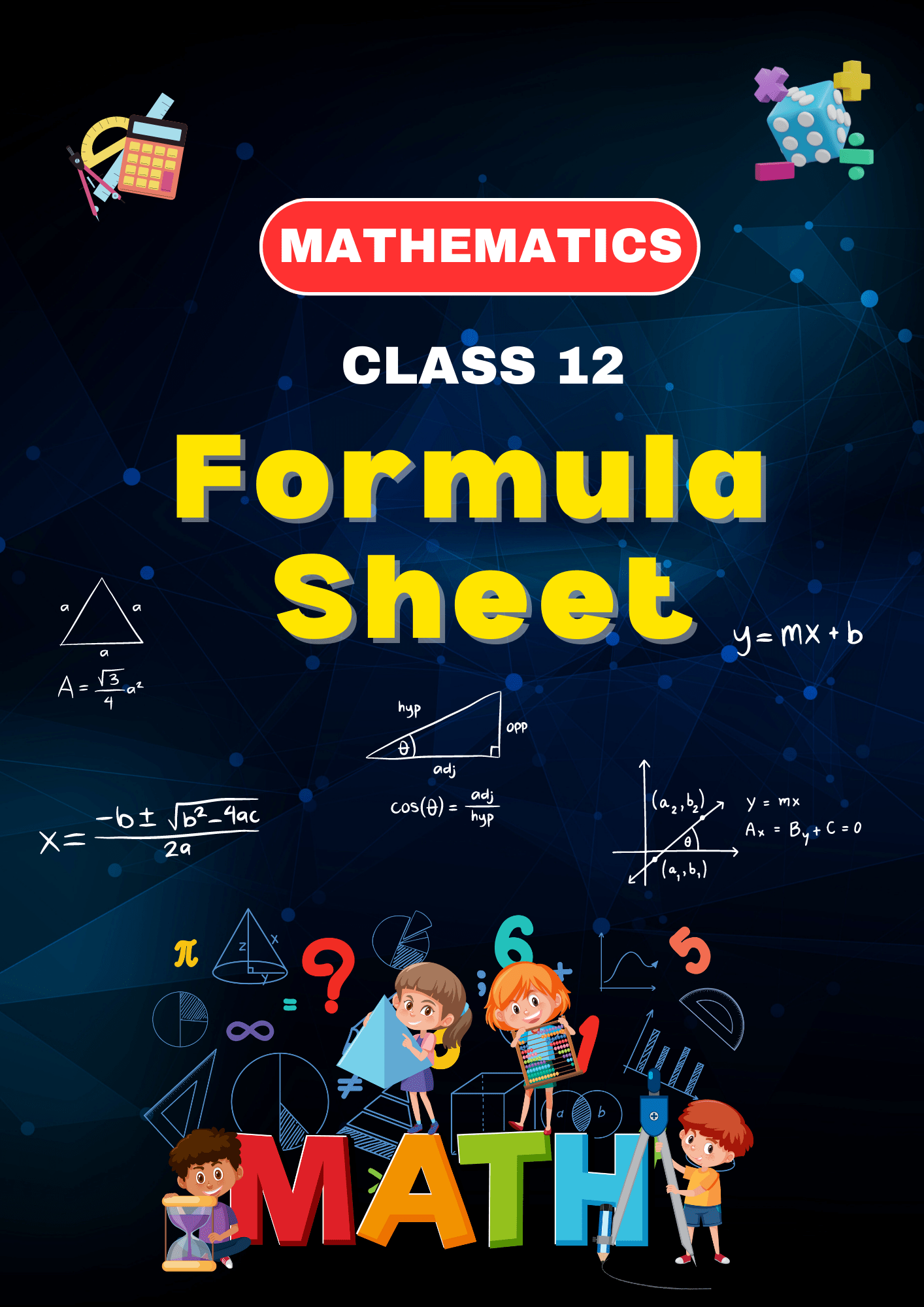Class 12 Maths Formulas

About Course
Inverse Trigonometry formulas : principal values LPInverinv DXini.Learning math formulas for class 12 can be made easier with some effective strategies. Here are some tips to help you:
- Understand Concepts: Before memorizing, make sure you understand the underlying concepts. This will help you remember formulas better.
- Practice Regularly: Solve a variety of problems that use the formulas. Regular practice reinforces memory and helps you see how formulas are applied.
- Create a Formula Sheet: Write down all the formulas in a dedicated notebook. Organizing them by topic can help you study more efficiently.
- Use Mnemonics: Create memory aids or acronyms to help remember complex formulas.
- Visual Aids: Draw diagrams or charts to visualize the formulas and their applications.
- Flashcards: Make flashcards with the formula on one side and an example problem on the other. Review them regularly.
- Group Study: Studying with peers can provide different perspectives and techniques for remembering formulas.
- Teach Others: Explaining formulas to someone else can reinforce your understanding and memory.
- Use Online Resources: Websites and videos can provide additional explanations and examples that can help clarify the formulas.
- Stay Consistent: Set aside regular study time for math to gradually build your understanding and retention of formulas.
By combining these strategies, you’ll find it easier to learn and remember the math formulas you need for class 12!
Especially loved how you structured the entire focus area of dieting into most important ones to lesser ones.